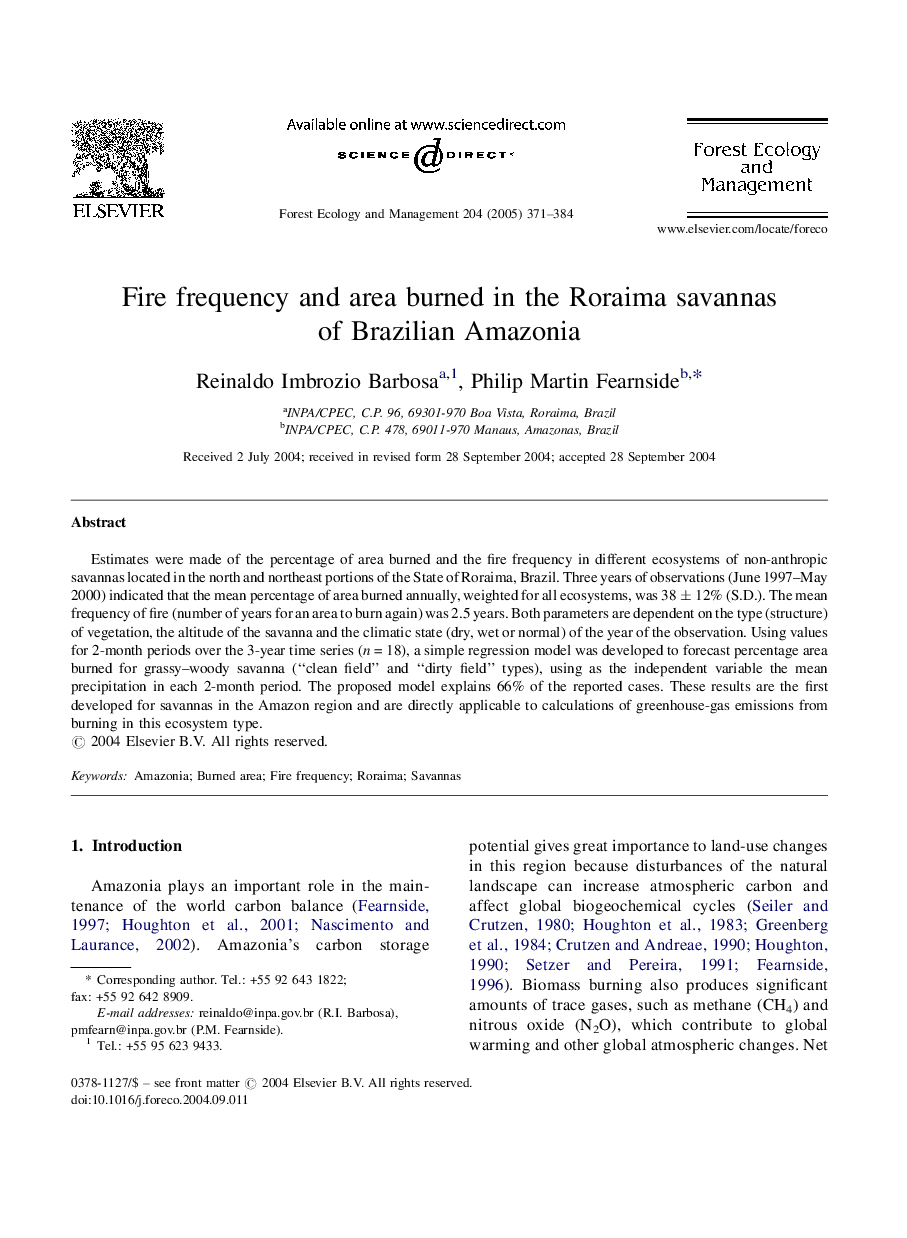| Article ID | Journal | Published Year | Pages | File Type |
|---|---|---|---|---|
| 9620539 | Forest Ecology and Management | 2005 | 14 Pages |
Abstract
Estimates were made of the percentage of area burned and the fire frequency in different ecosystems of non-anthropic savannas located in the north and northeast portions of the State of Roraima, Brazil. Three years of observations (June 1997-May 2000) indicated that the mean percentage of area burned annually, weighted for all ecosystems, was 38 ± 12% (S.D.). The mean frequency of fire (number of years for an area to burn again) was 2.5 years. Both parameters are dependent on the type (structure) of vegetation, the altitude of the savanna and the climatic state (dry, wet or normal) of the year of the observation. Using values for 2-month periods over the 3-year time series (n = 18), a simple regression model was developed to forecast percentage area burned for grassy-woody savanna (“clean field” and “dirty field” types), using as the independent variable the mean precipitation in each 2-month period. The proposed model explains 66% of the reported cases. These results are the first developed for savannas in the Amazon region and are directly applicable to calculations of greenhouse-gas emissions from burning in this ecosystem type.
Related Topics
Life Sciences
Agricultural and Biological Sciences
Ecology, Evolution, Behavior and Systematics
Authors
Reinaldo Imbrozio Barbosa, Philip Martin Fearnside,
